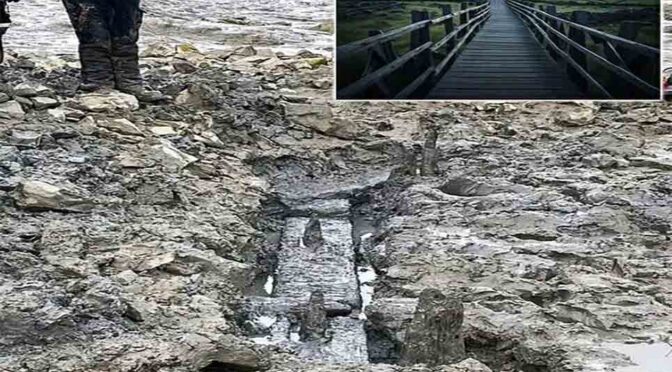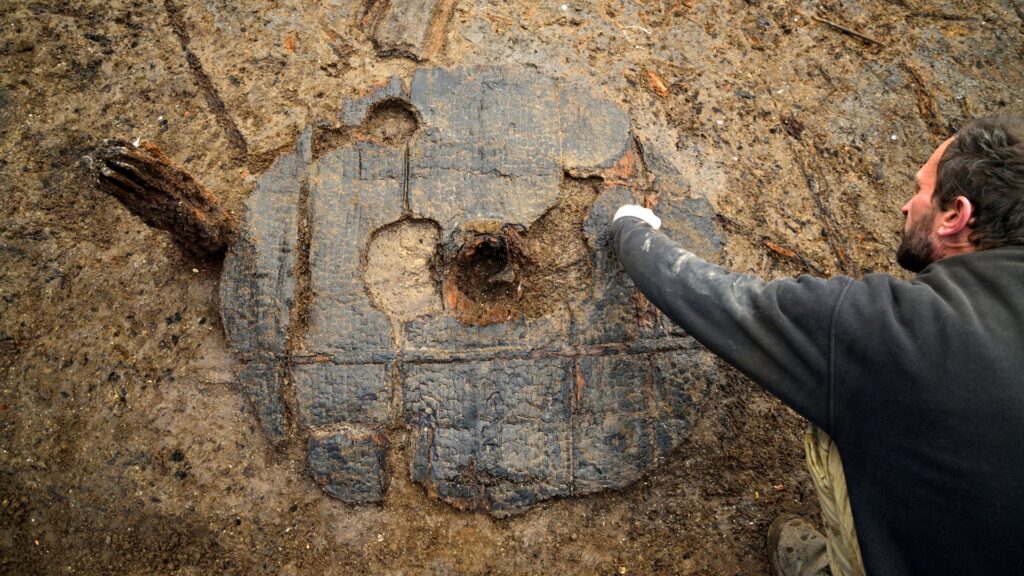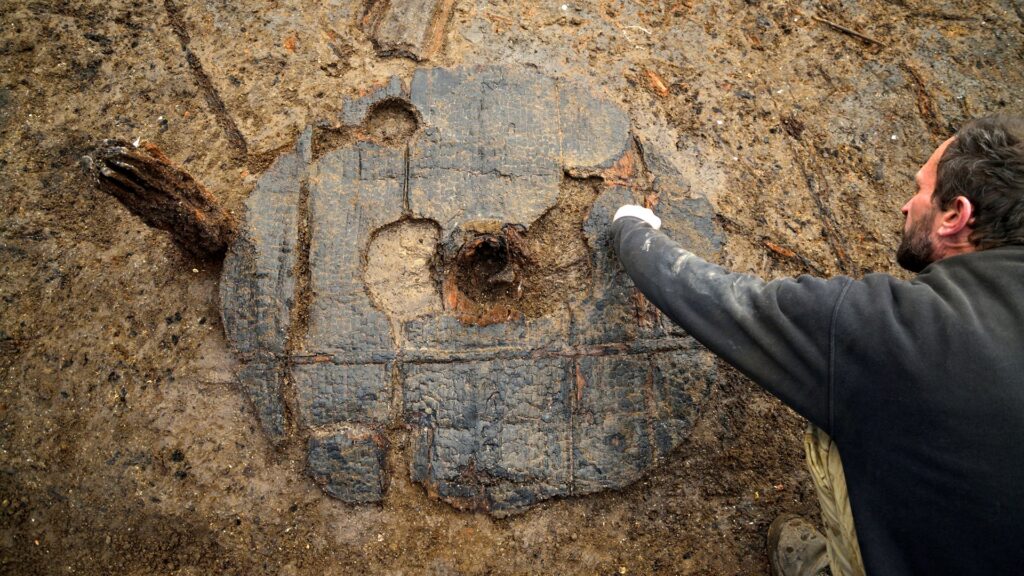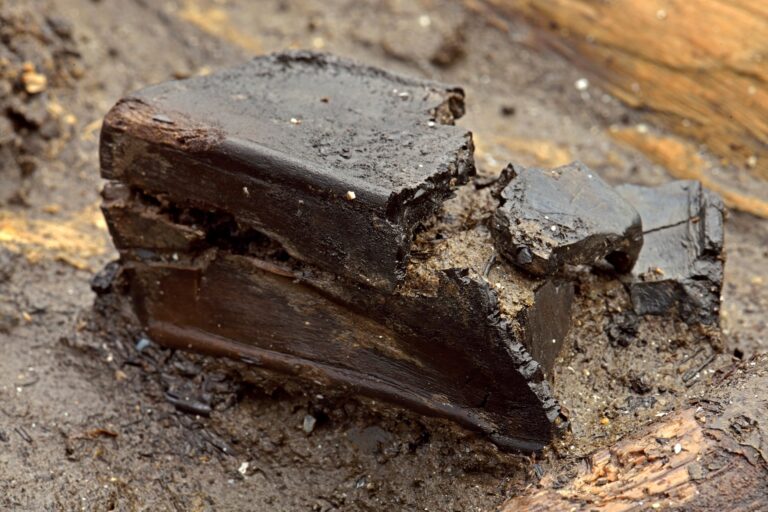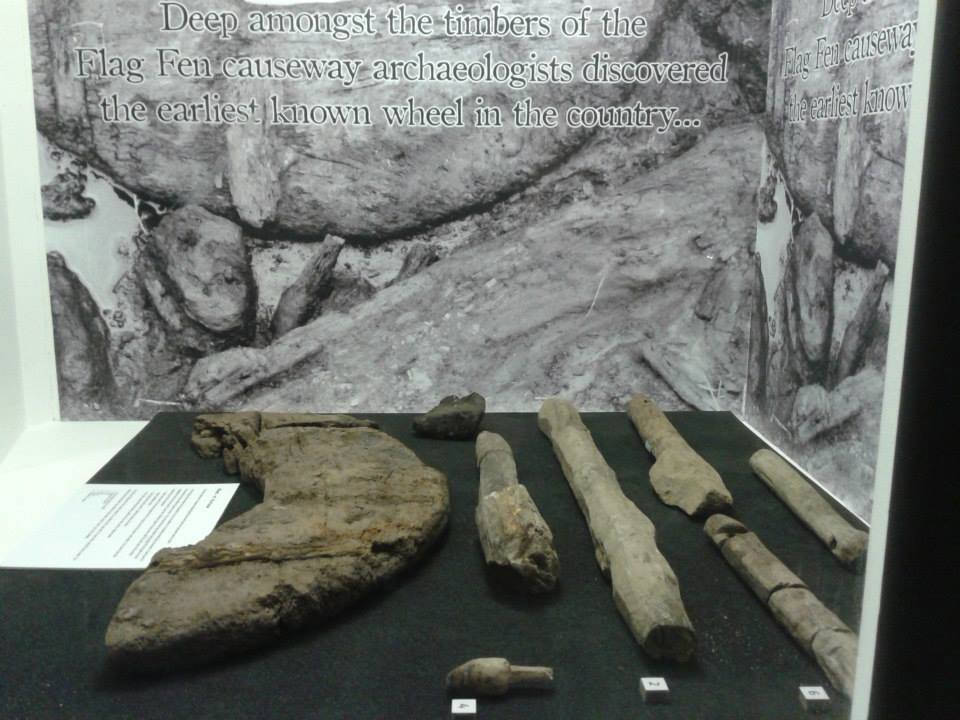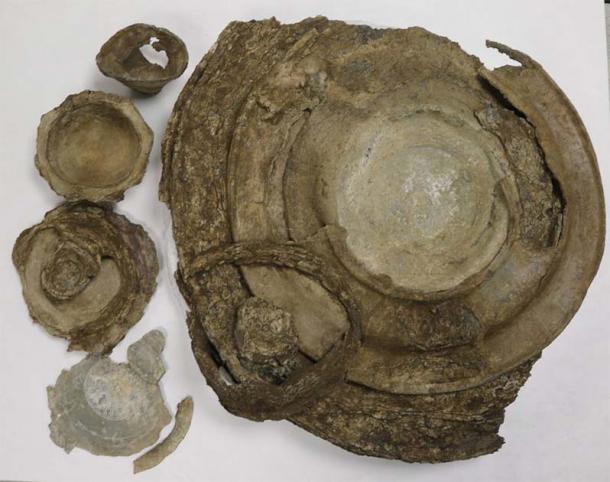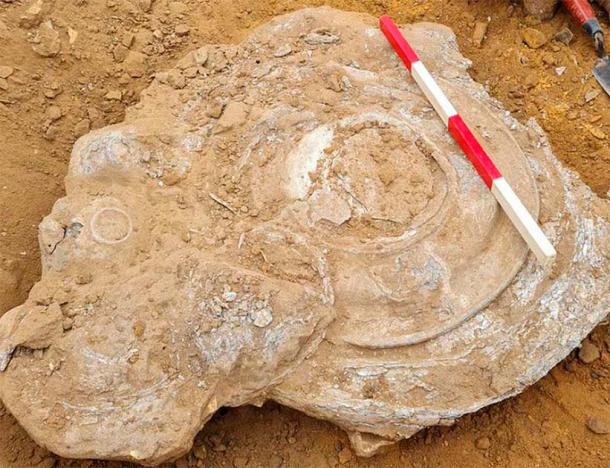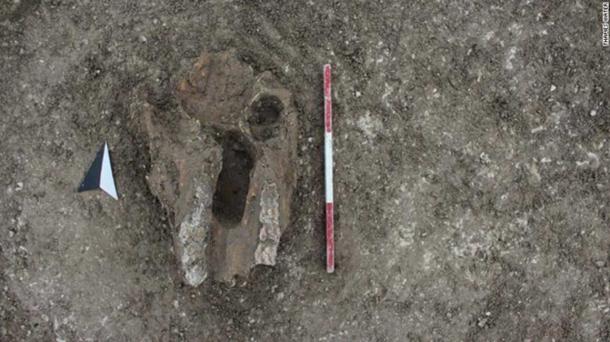800,000-Year-Old Human Footprints Discovered in UK
Archaeologists today announced the discovery of a series of footprints left by a group of adults and children about 800,000 years ago. The prints were first discovered and recorded on the foreshore at Happisburgh in Norfolk, England, in May 2013.

“At first we weren’t sure what we were seeing, but as we removed any remaining beach sand and sponged off the seawater, it was clear that the hollows resembled prints, perhaps human footprints,” said Dr Nick Ashton of the British Museum, the lead author of a paper published in the open-access journal PLoS ONE.

Using a technique called photogrammetry, Dr Ashton and his colleagues recorded the surface as quickly as possible before the sea eroded it away. The analysis of images confirmed that the elongated hollows were indeed ancient human footprints, perhaps of five individuals.
The analysis showed that the prints were from a range of adult and juvenile foot sizes and that in some cases the heel, arch and even toes could be identified, equating to modern shoes of up to U.S. size 9-10 (European 39-41).

“In some cases we could accurately measure the length and width of the footprints and estimate the height of the individuals who made them. In most populations today and in the past foot length is approximately 15 percent of height,” explained co-author Dr Isabelle De Groote of Liverpool John Moores University.
“We can therefore estimate that the heights varied from about 0.9 m to over 1.7 m. This height range suggests a mix of adults and children with the largest print possibly being a male.”

Over the last ten years the sediments at Happisburgh have revealed a series of sites with stone tools and fossil bones, dating back to over 800,000 years. This latest discovery is from the same deposits.
“Although we knew that the sediments were old, we had to be certain that the hollows were also ancient and hadn’t been created recently,” said co-author Dr Simon Lewis from Queen Mary University of London.
“There are no known erosional processes that create that pattern. In addition, the sediments are too compacted for the hollows to have been made recently.”

The age of the site, 800,000 years ago, is based on its geological position beneath the glacial deposits that form the cliffs, but also the association with extinct animals.
The site also preserves plant remains and pollen, together with beetles and shells, which allows a detailed reconstruction of the landscape. At this time Britain was linked by land to continental Europe and the site at Happisburgh would have been on the banks of a wide estuary several miles from the coast. There would have been muddy freshwater pools on the floodplain with salt marsh and coast nearby.
Deer, bison, mammoth, hippo and rhino grazed the river valley, surrounded by more dense coniferous forest. The estuary provided a rich array of resources for the early humans with edible plant tubers, seaweed and shellfish nearby, while the grazing herds would have provided meat through hunting or scavenging.
Fossil remains of our forebears are still proving elusive.
“The humans who made the Happisburgh footprints may well have been related to the people of similar antiquity from Atapuerca in Spain, assigned to the species Homo antecessor. These people were of a similar height to ourselves and were fully bipedal.
They seem to have become extinct in Europe by 600,000 years ago and were perhaps replaced by the species Homo heidelbergensis.
Neanderthals followed from about 400,000 years ago, and eventually modern humans some 40,000 years ago,” said co-author Prof Chris Stringer of the Natural History Museum, UK.
The importance of the Happisburgh footprints is highlighted by the rarity of footprints surviving elsewhere.
Only those at Laetoli in Tanzania at about 3.5 million years and at Ileret and Koobi Fora in Kenya at about 1.5 million years are more ancient.
“These footprints provide a very tangible link to our forebears and deep past,” Dr Ashton concluded.

